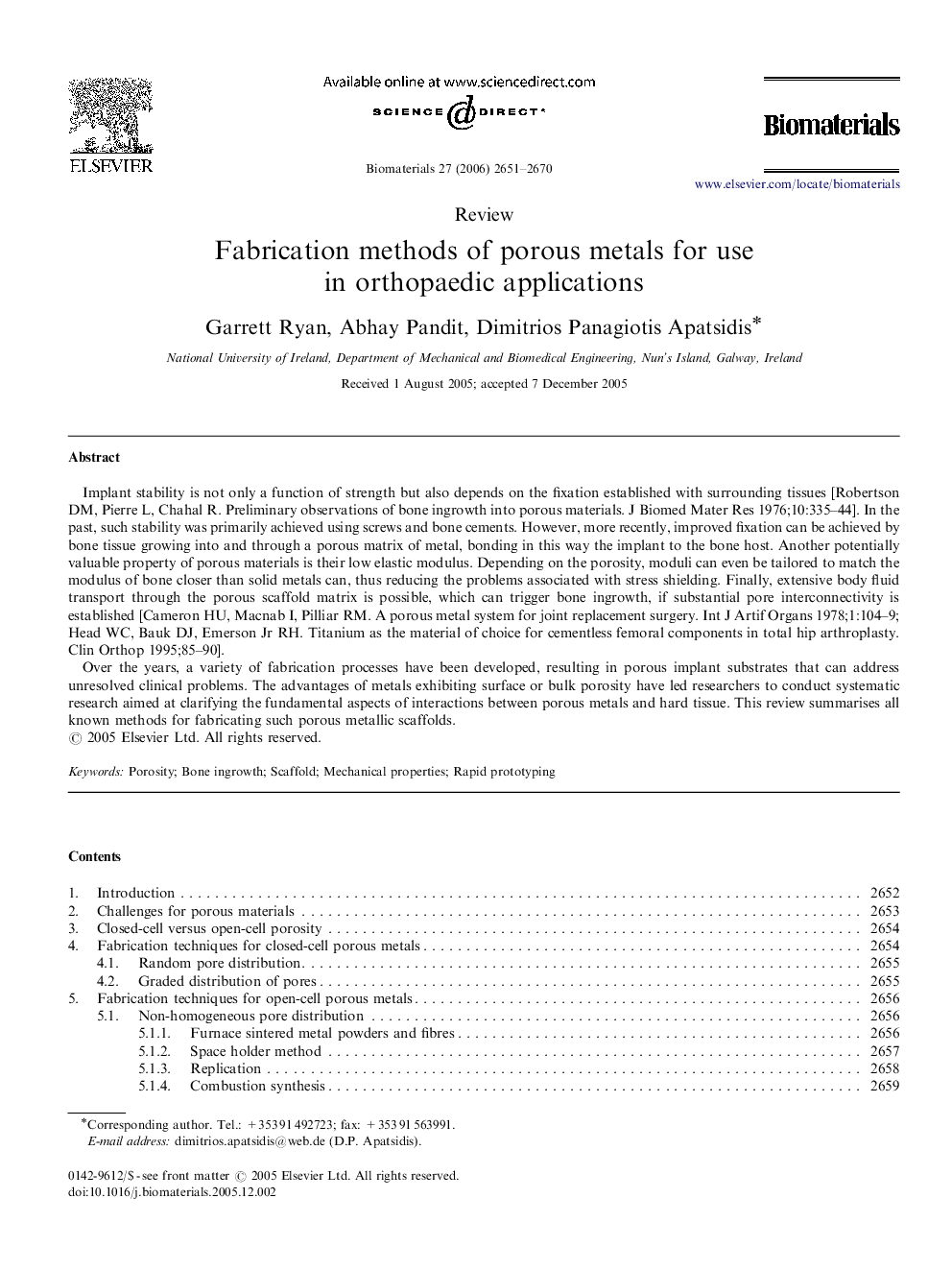| کد مقاله | کد نشریه | سال انتشار | مقاله انگلیسی | نسخه تمام متن |
|---|---|---|---|---|
| 11833 | 761 | 2006 | 20 صفحه PDF | دانلود رایگان |

Implant stability is not only a function of strength but also depends on the fixation established with surrounding tissues [Robertson DM, Pierre L, Chahal R. Preliminary observations of bone ingrowth into porous materials. J Biomed Mater Res 1976;10:335–44]. In the past, such stability was primarily achieved using screws and bone cements. However, more recently, improved fixation can be achieved by bone tissue growing into and through a porous matrix of metal, bonding in this way the implant to the bone host. Another potentially valuable property of porous materials is their low elastic modulus. Depending on the porosity, moduli can even be tailored to match the modulus of bone closer than solid metals can, thus reducing the problems associated with stress shielding. Finally, extensive body fluid transport through the porous scaffold matrix is possible, which can trigger bone ingrowth, if substantial pore interconnectivity is established [Cameron HU, Macnab I, Pilliar RM. A porous metal system for joint replacement surgery. Int J Artif Organs 1978;1:104–9; Head WC, Bauk DJ, Emerson Jr RH. Titanium as the material of choice for cementless femoral components in total hip arthroplasty. Clin Orthop 1995;85–90].Over the years, a variety of fabrication processes have been developed, resulting in porous implant substrates that can address unresolved clinical problems. The advantages of metals exhibiting surface or bulk porosity have led researchers to conduct systematic research aimed at clarifying the fundamental aspects of interactions between porous metals and hard tissue. This review summarises all known methods for fabricating such porous metallic scaffolds.
Journal: Biomaterials - Volume 27, Issue 13, May 2006, Pages 2651–2670